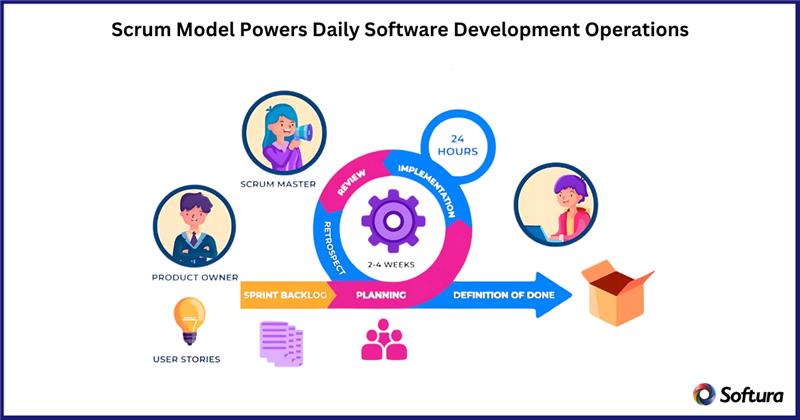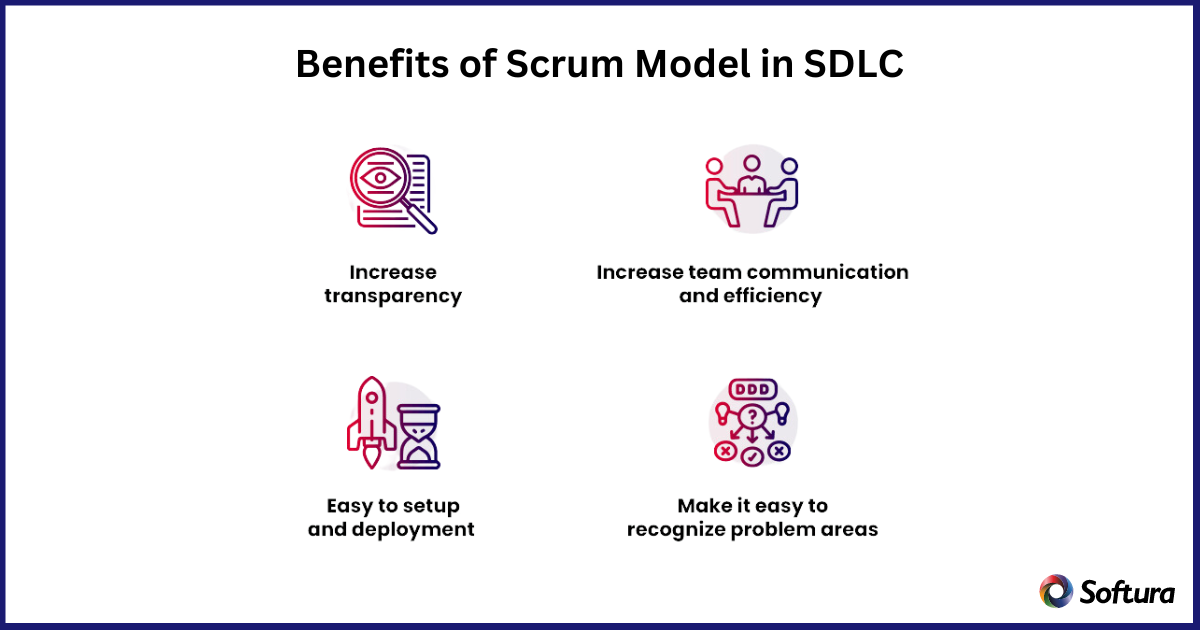"Our integration with the Google Nest smart thermostats through Aidoo Pro represents an unprecedented leap forward for our industry."
- Antonio Mediato, founder and CEO of Airzone.
You can never spend a day with a software development team without using the word ‘scrum model in sdlc’ at least once. It has become that important.
Imagine trying to solve a huge puzzle without knowing how the pieces will fit. Now, what if you get to work in small, manageable sections, adjusting your strategy as you go about it based on what you learn.
That’s exactly what scrum model in sdlc.
Now, let’s explore in detail why scrum is so powerful, how it improves daily operations and some of the myths that have been talked about over the years.
Let’s say you’re part of a software development team building an app. In traditional development models, you might spend months planning, coding, testing, and only then release the app to the world—only to realize it’s not what the users really want. This “big-bang” approach has led to numerousfailed projects.
Scrum was designed to solve this problem.
Instead of waiting until the end to find out if things are working, Scrum model in sdlc condenses the development process into short bursts called sprints. Each sprint usually takes 1 to 4 weeks long. By working in sprints, the team can build, test, and show progress quickly. Also it can gather feedback along the way.
It’s like cooking a meal and letting everyone taste it while you’re preparing each course, ensuring everyone’s happy with the end result.
For example, when developing a feature for a ride-hailing app like Uber, Scrum allows developers to create the driver’s profile system in one sprint. Also, they test it and gather feedback from stakeholders.
In the next sprint, they may focus on integrating the mapping feature, adjusting based on earlier feedback.
This step-by-step progress leads to a product that evolves smoothly, avoiding unpleasant conflicts at the end.
"Our integration with the Google Nest smart thermostats through Aidoo Pro represents an unprecedented leap forward for our industry."
- Antonio Mediato, founder and CEO of Airzone.

Here are a few key elements that make scrum model work:
"By analyzing the data from our connected lights, devices and systems, our goal is to create additional value for our customers through data-enabled services that unlock new capabilities and experiences."
- Harsh Chitale, leader of Philips Lighting’s Professional Business.
Onboard dedicated Offshore App Developers
Develop Mobile application and integrate it into your business processes with Softura's dedicated offshore mobile app developers!
Scrum powers daily software development operations by promoting flexibility and collaboration. Here's a story to illustrate:
Imagine you’re building a complex e-commerce platform for a major retailer. The company wants to launch a new “one-click” checkout feature in time for the holiday season.
Without Scrum model in sdlc, the team might spend months planning, coding, and testing the feature. In the end, they might find that it’s too slow to handle the surging traffic.
But in a Scrum environment, the dedicated software development team breaks this feature down into smaller, bite-sized tasks.
If something goes wrong, they pivot quickly. Thus, a disastrous launch is avoided.
Scrum model in sdlc gives teams the ability to adapt daily. They can adjust goals based on feedback, spot issues early, and ensure everyone stays aligned on priorities.

"By analyzing the data from our connected lights, devices and systems, our goal is to create additional value for our customers through data-enabled services that unlock new capabilities and experiences."
- Harsh Chitale, leader of Philips Lighting’s Professional Business.
Scrum often gets misunderstood, leading to myths that can scare teams away from using it. Let’s debunk a few of the most common ones:
"By analyzing the data from our connected lights, devices and systems, our goal is to create additional value for our customers through data-enabled services that unlock new capabilities and experiences."
- Harsh Chitale, leader of Philips Lighting’s Professional Business.
So, why do teams love Scrum? Here are some of the most compelling benefits:
Take, for example, the story of Spotify. The company grew rapidly, using Scrum model in SDLC to adapt to shifting market demands. By organizing development teams into small, self-organizing groups (or “squads” as they call them), Spotify was able to release new features quickly while staying aligned with customer feedback and expectations.

Scrum model in SDLC is the idea of building incrementally, adapting as you go, and improving continuously. Whether you're a startup working with a small team or a large-scale organization looking to stay agile, Scrum can significantly increase your efficiency and product quality.
If you’re considering adopting the Scrum model in SDLC or looking for experts to implement and guide your team, Softura is here to help. With extensive experience in Agile methodologies, our team of dedicated developers can help your organization implement Scrum practices tailored to your specific development needs.
"Our integration with the Google Nest smart thermostats through Aidoo Pro represents an unprecedented leap forward for our industry."
- Antonio Mediato, founder and CEO of Airzone.
Are you ready for your next project?
Unlock your company's full potential with our comprehensive Software development services. Contact our experts today to discuss how we can drive your success together.